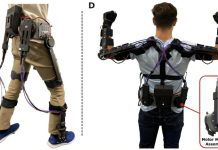
A team of researchers, led by Professor Dong Eon Kim from Pohang University of Science and Technology and Professor X. Lai at the Innovation Academy for Precision Measurement Science and Technology, has made significant strides in ultrafast imaging.
They have successfully observed two distinct holographic patterns—resembling spider legs and fishbones—within molecules for the first time.
This achievement was detailed in a recent publication in the journal Light: Science & Applications.
Traditional imaging techniques like X-ray diffraction often struggle to keep up with the swift movements of electrons inside molecules.
To overcome this challenge, the team employed a technique called strong-field photoelectron holography (SFPH).
This method uses extremely short, powerful laser pulses to capture high-resolution images of electron movements, providing insights that were previously unattainable.
The core of this new technique involves using carrier-envelope-phase-controlled, near-single-cycle laser pulses.
These pulses are so brief that they allow researchers to control and observe electrons on an attosecond scale—an attosecond is to a second what a second is to about 31.7 billion years.
By controlling these ultrafast pulses, the researchers were able to minimize interference from other electronic signals that usually complicate SFPH measurements.
This clarity revealed the spider-leg-like and fishbone-like patterns for the first time.
Professor Kim explained, “For the first time, we can directly observe these patterns and start to understand the behavior of electrons within molecules at incredibly short time scales.”
The clarity of these patterns not only demonstrates the power of the imaging technique but also enables the team to extract precise structural information about the molecules being studied.
This groundbreaking method has potential applications across a wide range of fields, including chemistry, biology, and materials science.
By understanding electron dynamics more clearly, scientists can gain new insights into molecular structures and behaviors, potentially leading to advances in controlling chemical reactions and developing new materials.
Additionally, this technique simplifies the imaging process compared to older methods, which often required multiple measurements under varying conditions to achieve similar results.
The simplicity and precision of this approach make it a promising tool for further research and application, merging with other techniques for even more detailed explorations.
Professor Kim remains optimistic about the future implications of their findings, stating, “Our work opens up exciting avenues for studying molecular dynamics and controlling chemical reactions at the electron level.”
This innovation not only expands our understanding of molecular structures but also paves the way for advancements in various scientific fields.
Source: KSR.



